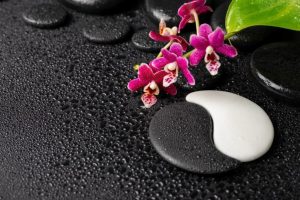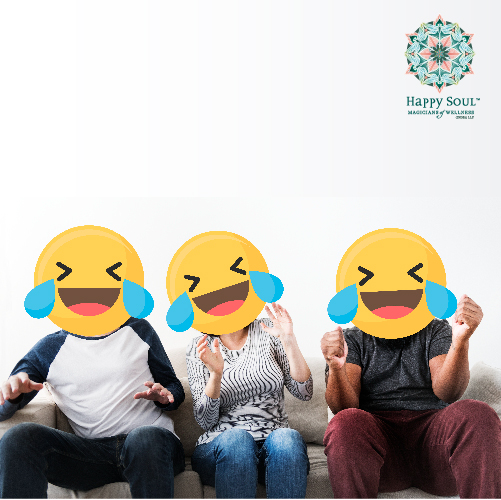
Pratyahara: Last Anga of Yoga
April 18, 2020Yog Sutras of Patanjali were documented 5000 years back… When the whole world was living in caves and jungles (modern historian’s interpretation), then the highly developed people of Bharat were revealing the secrets of creation… scientifically; so scientifically that till date the modern sciences are copying from them and lots is not yet understood.
Patanjali Yog sutras are an encyclopaedia on human behaviour and psychology. There is no aspect of a human being, which is not touched or explained and evaluated. The mind is so beautifully explained that it amazes when one wonders… all this 5000 years back??!
They give not just explanations but also solutions to all human maladies and fears… just that we should have a developed mind to understand them and not interpret them as a physical exercise. They explain the complete being and his various levels of existences and how to go beyond… practically.
Nowadays, Asana practice is often seen as the main element of yoga although it is only one part of it. The classical yoga system, as described in the Yoga Sutras of Patanjali, has eight steps that can be divided into external and internal yoga.
The first four limbs are seen as the external yoga. Here we are focused on our ethical standards (yama), our self-discipline (niyama), our physical yoga practice (asana), and the control of our breath (pranayama).
The fifth limb of yoga, pratyahara, can be seen as the bridge between external and internal yoga. It moves the practitioner towards the more subtle art of subtle concentration (Dharana) and meditation(Dhyana), and finally merging to samadhi (enlightenment).
We will dive into the Lost Anga of Yoga… The Fifth…
Pratyahara:
The word ‘pratyahara’ stems from the Sanskrit prati and ahara. Prati means “against or away,” and ahara is anything we take into ourselves from the outside.
We receive a constant stream of information through our five senses. Needless to say in today’s digital age, the flow of stimuli can be overwhelming, and it starts to get harder and harder to take a moment of sensory rest.
When we instantly react to the information our senses feed us, we are being pulled away from our inner peace into the fluctuating external world. The senses can easily take over, and we end up running from one impulsive reaction to the other, forgetting our higher goals in life.
Focus the mind and the senses will follow.
How to practice pratyahara?
The mind can only take in a certain amount of the sensory input, so the energy flows where the mind goes. We can use this in pratyahara, and intentionally direct the mind inward, away from external stimuli. If the mind is controlled, the senses are controlled also.
This regular practice can go a long way as building blocks your Meditation practice (Dhyana) itself.
Here are a few amazing practices you can bring to your life step by step to learn a very important but
‘THE LOST ANGA OF YOGA’ : PRATYAHARA –
1. Get Away from Media for 5 minutes a day for 7 days… Forced negation stage…
This will be a shocker to us all.. but try and do nothing for only 5 minutes a day and notice how your mind has become addicted to do something…
Get away from all information input as a daily practice. By Media, I mean, all of it … computers, phones, Tablets, newspapers, Books… all of it!!! You can use your time to shut down everything thats feeding into your information input.
Try and do absolutely nothing.
2. After 7 days just close your eyes 10 minutes a day, … Flow state …
some might find it difficult just sitting and doing nothing very difficult or very easy… each to their own… but these are the stepping stones to your practice.. Close your eyes and let the mind flow for these next 7 days… No focus, No concentration just letting the thoughts come and go… this will be the first practice to notice the mind itself. No judgement here … just the process and the practice… 10 minutes will flow through like a breeze and you will start to understand the monkey nature of the mind.
3. Increase your Introspection time to 15 minutes a day for next 7 days..Introspection Stage
Just let yourself flow for the 15 minutes…. Bring your gentle awareness to your breath.. Nothing forced here .. no stressed out focus or concentration… just gentle awareness of breath.
You will find yourself wavering again and again from your breath to your thought..
don’t worry, your mind will go on a journey again and again … but you can bring it back … to your breath without any judgment whatsoever and be in your breath awareness…
At this point you will start to enter into drifts of consciousness.. where the mind starts to become silent … the external inputs stop… if you experience this silent space even for a miniscule of a second… give yourself a pat on the back!!!! You just experienced Pratyahara…. Moving inwards from the senses…
You can start by directing your mind to one sense only, such as hearing. Next time you are in this practice, allow your mind to focus on all the different sounds around you, far away and close by. Try not to judge or label the sounds, just listen. Once the mind gets used to the sounds, it will naturally focus more on the inside.
4. Continue this technique in a sensory Deprivation tank : a process to move deeper into consciousness connection:
At this moment, the mind starts to know what a silent space is, if you would like to experience a silent, timeless spaces try 1000 Petals… An Urban ashram, where the practice inward 4 Angas begins… Pratyahara, Dharana, Dhyana And Samadhi.
Through this cutting edge technology, you can ease your way to the practice of meditation and beyond through
The Sensory deprivation tanks.
Founded in 1950’s by a Neuroscientist Dr. John C Lilly, for the NASA scientists, These tanks provide zero sensory stimuli in them including gravity… (Yes, float in Zero gravity).
10 inches of water in a 6ft by 9 ft open float tanks provide a perfect space to let loose the mind… and the body…
The 750 Kg’s of Magnesium sulphate (Epsom Salt) in the tank makes one float effortlessly in zero gravity, a Light switch at your arms length allows you to turn the lights off… making the float room full dark (not even a ray of light seeps in), Music is turned off or on at your choice… A true space to heal the mind and the body from the constant bombardment of external stimuli…. A place to practice going deeper into the self… READ MORE IN FLOATATION THERAPY ARTICLE.
Mind you though, this amazing scientific technique takes 2 to 3 sessions to start getting results out of… so be patient, be regular just as you were in your asana and pranayama practice…
From this point onwards you will require to do a specific work with our facilitators at 1000 Petals as well. Please do ask for Deep process courses as well…
Love Light and Grace
– Amitabh Swetta,Founder, 1000 Petals








